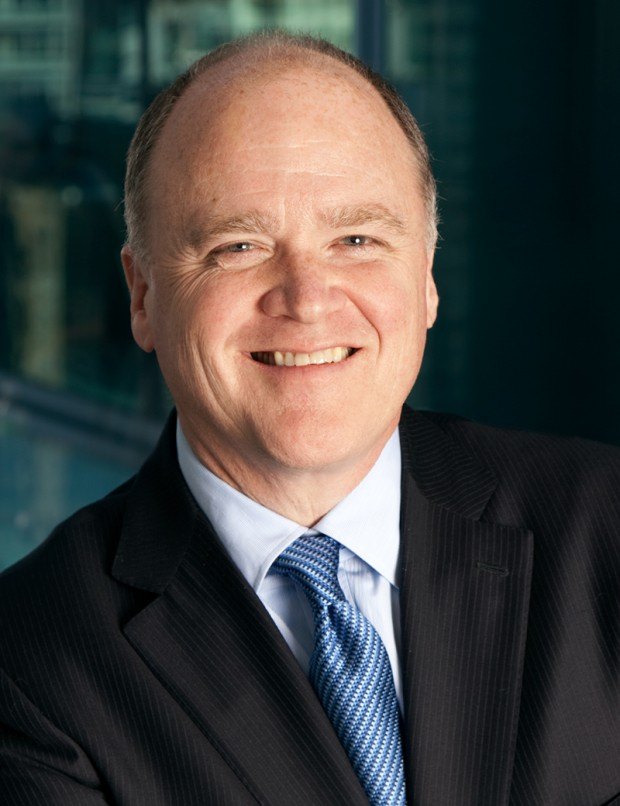Standard & Poor’s boosted the financial ratings of the operating subsidiaries of XL Group to A+ on Tuesday, providing external affirmation of positive progress made over the last five years.
Internally, XL executives also reviewed key indicators of that progress during an earnings conference call yesterday. But with third-quarter operating earnings declining 21.1 percent to $135.6 million, and the accident-quarter combined ratio climbing 5.4 points to 100.1 as a result of catastrophe and non-cat large losses, Chief Executive Mike McGavick restated a position he has taken on previous calls—that while improvements have been substantial by many measures, XL continues to be “a work in progress.”
S&P had previously downgraded XL’s ratings in December 2008, when the drag of a financial guaranty operation, investment losses and risk management issues contributed to the ratings agency’s view that the insurer’s competitive position and underwriting performance did not support an A+ rating.
“The upgrade reflects our view that XL has demonstrated improved operating performance and will be able to sustain such improvement through strategic growth initiatives, a strong market presence and a strong enterprise risk management (ERM) framework that will contribute to earnings stability,” S&P said in its rating announcement Wednesday.
“In recent years, the company has divested its financial-guaranty business, de-leveraged its balance sheet and managed down the risk in its investment portfolio.”
The announcement also said that S&P’s ratings “reflect XL’s strong business risk profile and strong financial risk profile, partially offset by its high risk position,” and that XL’s risk-adjusted capitalization, supported by improving earnings, was extremely strong as of year-end 2012—allowing the company to support growth initiatives and absorb potential large losses.
At various points during yesterday’s earnings conference call, McGavick also noted XL’s high-risk position.”We’re all about volatility around here,” he said, responding to an analyst who questioned why XL executives haven’t acted to rein in line sizes or to buy more reinsurance to contain impacts of large losses that pushed up the third-quarter loss and combined ratios.
“Given our diverse lines of business and the complex risks we write, one or more businesses will be expected to—from time to time—produce unusual levels of loss, as we saw in this quarter,” McGavick said during his introductory remarks.
In fact, the CEO said the management team believes it is on its way to an attractive double-digit return and an insurance segment combined ratio of 90 or better “at a faster clip than this quarter might indicate.” The third-quarter 2013 combined ratio for the insurance segment was 97.8 on an accident-quarter basis.
When large losses damage a quarter’s results, “we ask if this is indicative of a trend. Do we have the right leaders in place? Are the underwriters taking the kinds of risks we want? Are they in line with that business’ strategy and the group’s strategy?” McGavick explained during the conference call.
“In our view this quarter, in the main, we like the answers to these questions. These losses do not change our views,” he said, referring to $85 million in catastrophe losses, mainly in the reinsurance segment; two large losses (exceeding $10 million) in the insurance segment; and increased loss activity in the aerospace and marine businesses.
Putting the results in perspective, McGavick compared them to another challenging quarter for XL—fourth-quarter 2011—which also has “a collection of sizable losses.”
“In that quarter, our reviews of the loss-making businesses indicated a number of needs for improvement that caused a huge amount of revised work,” he said, stressing that in fourth-quarter, XL reported a 108 combined ratio. “This quarter we made an underwriting profit,” he said. On a calendar-year basis, XL’s overall third-quarter 2013 combined ratio was 95.
“Today is remarkably different, and it’s a direct result of the progress we’re making,” McGavick said.
As to the question of having the right leaders in place to maintain profit momentum, Gregory Hendrick, XL’s chief executive of insurance operations, did note that the leadership of the marine division recently changed.
Later, an analyst asked the executives about top-line rather than bottom-line impact of another leadership development—the departure of the CEO of XL’s property/casualty insurance operations in North America, Seraina Maag, who was hired by American International Group to run the Europe, Middle East and Africa region.
“You lost a fairly senior person recently.…Do you expect any potential top-line impact from that loss?” the analyst asked.
“No,” McGavick responded, without elaborating.
Asked about the impact of the S&P action, Jamie Veghte, CEO of reinsurance operations, said it would help with long-tail lines, in particular, where some cedents require a certain level of ratings. Hendrick said that while insurance is less rating-sensitive, the upgrade could help with XL’s international insurance book.
During the call, McGavick took the time to highlight a host of progress measures, including the year-to-date ex-catastrophe accident-year combined ratio of 96.1—”the best result on the same basis since 2007,” according to the CEO—and an 80.1 year-to-date combined ratio for reinsurance.
Overall, a 92.2 combined ratio for the first nine months came in 0.5 points better than a year ago, he added, attributing the underwriting profit figures to efforts to remix the business, underwriting actions, investments in talent and technology, and a drive for rate. All these efforts “are the reasons for our greater resilience,” he said.
Focusing in on business mix, McGavick said that “we are now able to rely on a far broader set of profitable and improving businesses,” noting that more than 70 percent of XL’s insurance businesses are now showing better loss ratios through nine months than in the same period last year.
Giving more detail about progress in the insurance segment, Hendrick reviewed the hiring of three executives in the quarter, and said that over the past two years, XL has replaced one-third of the insurance segment business leaders while adding 61 underwriters. “We’re now seeing enhanced underwriting capability reflected in the profitable growth of the majority of our business.”
Drilling down on the process of remixing the business, Hendrick split the insurance book into three categories—business that’s performing at target, business that’s within 5 percent of target, and business that’s more than 5 percent away—noting that 50 percent of the insurance book is now in the “at target” category, compared to a 25 percent figure that was “at target” 12-18 months ago.
The last segment—furthest from target—is now 20 percent of XL’s insurance business, down from 40 percent last year, he said, noting that underwriting actions to drive the changes have included pricing, tiering by industry and geography, limits management, and deductible management.
“The reality is that with the book improving at the rate it’s improving, we’re down to a whole bunch of little decisions,” McGavick said.
“Given all we’ve been through since the time of these downgrades, this is an incredibly gratifying day for us,” McGavick said, referring to the S&P action. “We feel an enormous validation of the hard work of thousands of people around the world,” he said.





















 The Future of Knowledge in Insurance: From Training to AI-Powered Productivity
The Future of Knowledge in Insurance: From Training to AI-Powered Productivity  AI in Property/Casualty Insurance: Why Trusted Data Is the Missing Link
AI in Property/Casualty Insurance: Why Trusted Data Is the Missing Link  Unpacking a Consumer Intervenor’s Novel Idea
Unpacking a Consumer Intervenor’s Novel Idea  Examining 5 Key Factors Fueling MGA Growth—and Emerging Challenges Ahead
Examining 5 Key Factors Fueling MGA Growth—and Emerging Challenges Ahead 




